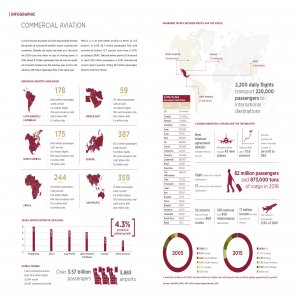MEXSAT to Include Mexican Tech, Professionals

STORY INLINE POST
Q: How does the government support the space industry to boost economic development?
A: The sector receives constant support from the federal government. The Mexsat system provides support to telecommunications across Mexico and its seas, the south of the US and part of Central America. It consists of two satellites, which are Bicentenario, for fixed service, and Morelos III, for mobile service. In 2017, a bid for a third Mexsat satellite will take place under the direction of the Deputy Minister of Communications. The new satellite will address the growing demand for good quality, rapid telecommunications at a reasonable cost, social networks and uploading and downloading data.
The emergence of Big Data has increased the requirements for communication and information processing, leading countries to require better communication systems. Industry 4.0 has connected most equipment in manufacturing plants wirelessly, sometimes through Wi- Fi, Wimax or Bluetooth for short distances. Satellites can be a good solution for countries that are developing land infrastructure but need an integral, short-term solution that guarantees access to broadband, and which can be deployed quickly with low risk.
Emerging economies like Mexico invest in satellites for fast, economical and reliable infrastructure and telecommunications support. Most space projects have no crew and are instead used to relay information. Satellites and antennae technology have a significant number of applications, including television transmissions that track disaster areas to measure the effects of global warming. These technologies also communicate with remote areas.
While this can be done with fiber optic cables, they would take years to be installed, are prohibitively expensive and operations are complex. A satellite can provide immediate access. In areas with other communication alternatives, such as fiber optics, satellites act as support and backup.
Q: To what extent will the Mexsat satellite incorporate Mexican manufacturing?
A: The Mexican satellite industry has evolved. We expect larger participation for the newest bid from local technicians, operators and companies, both for space vehicles and ground operations. The AEM is surveying companies with capabilities in mechanics, materials, software and orbital studies for the space sector. The tender for the satellite will include Mexican companies and professionals from the beginning.
The Mexsat satellite’s complexity means it will take at least three years to manufacture. After it is built, the satellite will enter a one-year commissioning period, during which it is placed in orbit to test all its systems. After being cleared for orbit the satellite will begin normal operations.
Q: What will differentiate the new unit from existing Mexican satellites?
A: Large satellites such as Morelos III are orbiting the Earth in a fixed orbit 36,000km away, delaying communication with the planet by 250ms. Smaller satellites are 100 times closer so transmission is faster. These satellites need less power and do not need to be in a determined orbit, a significant advantage as fixed orbital positions are hotly contested among satellite operators. Smaller satellites can fully orbit the Earth once every 90 minutes and having a network of hundreds of them ensures constant communication with greater broadband width, and fewer delays due to disconnections.
The main advantage of networks of small satellites is that they are more accessible for economies like Mexico. An investment in these technologies will strengthen integration across Mexico’s territory.
























